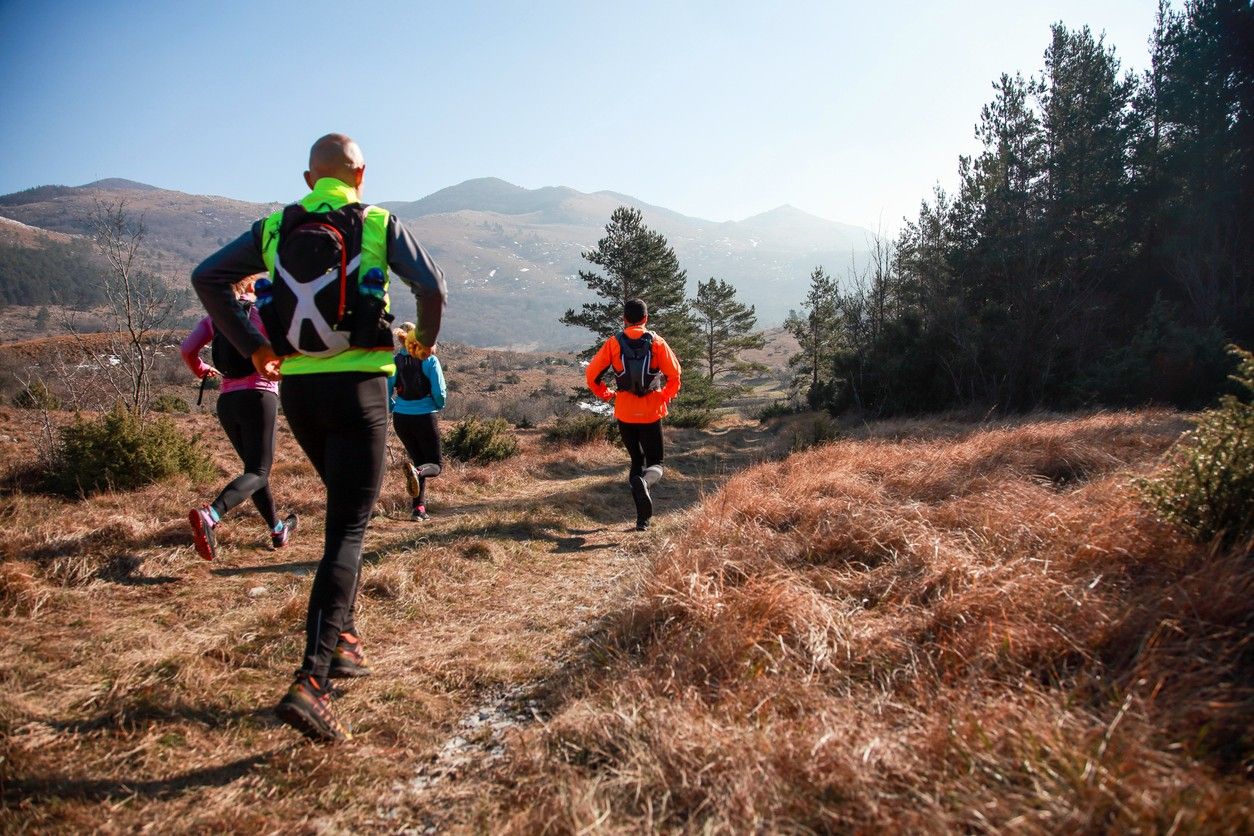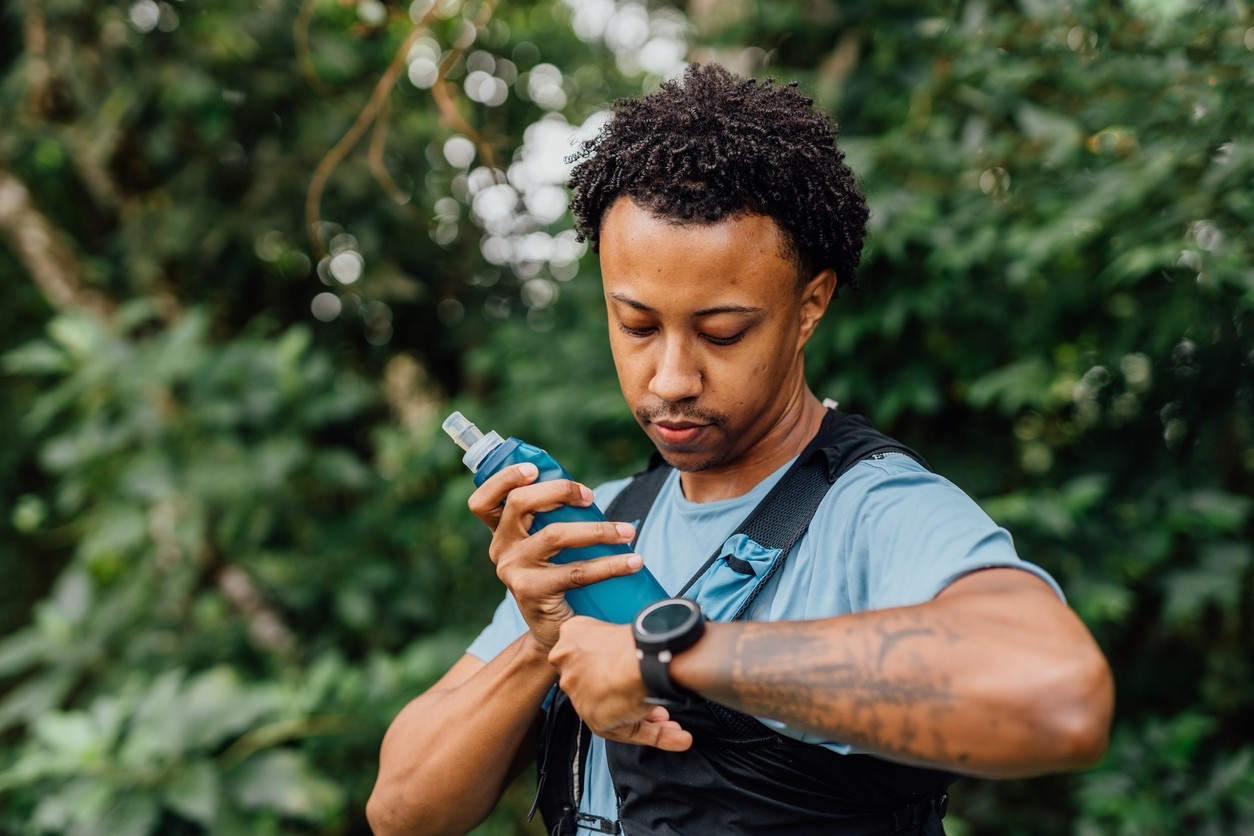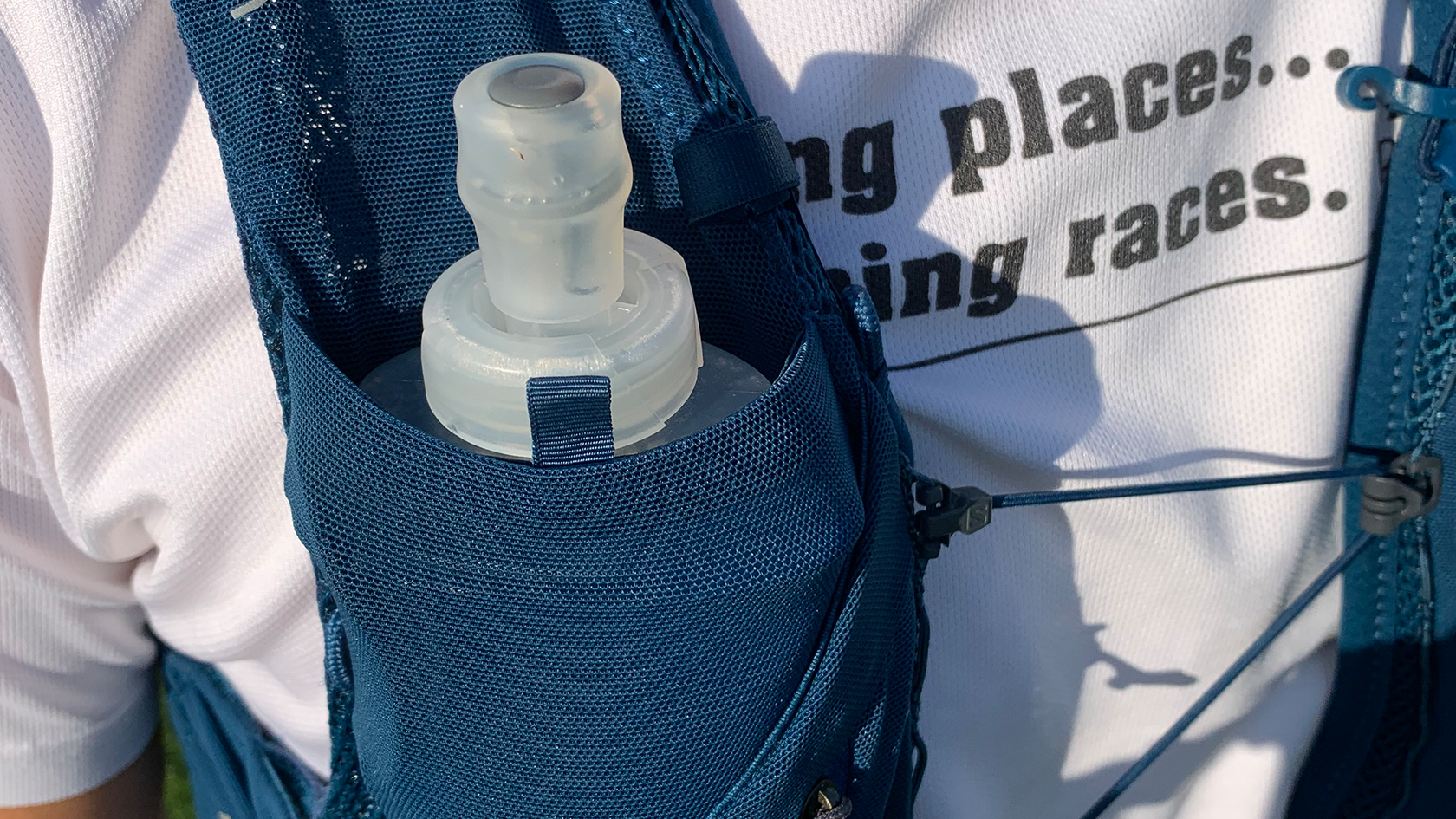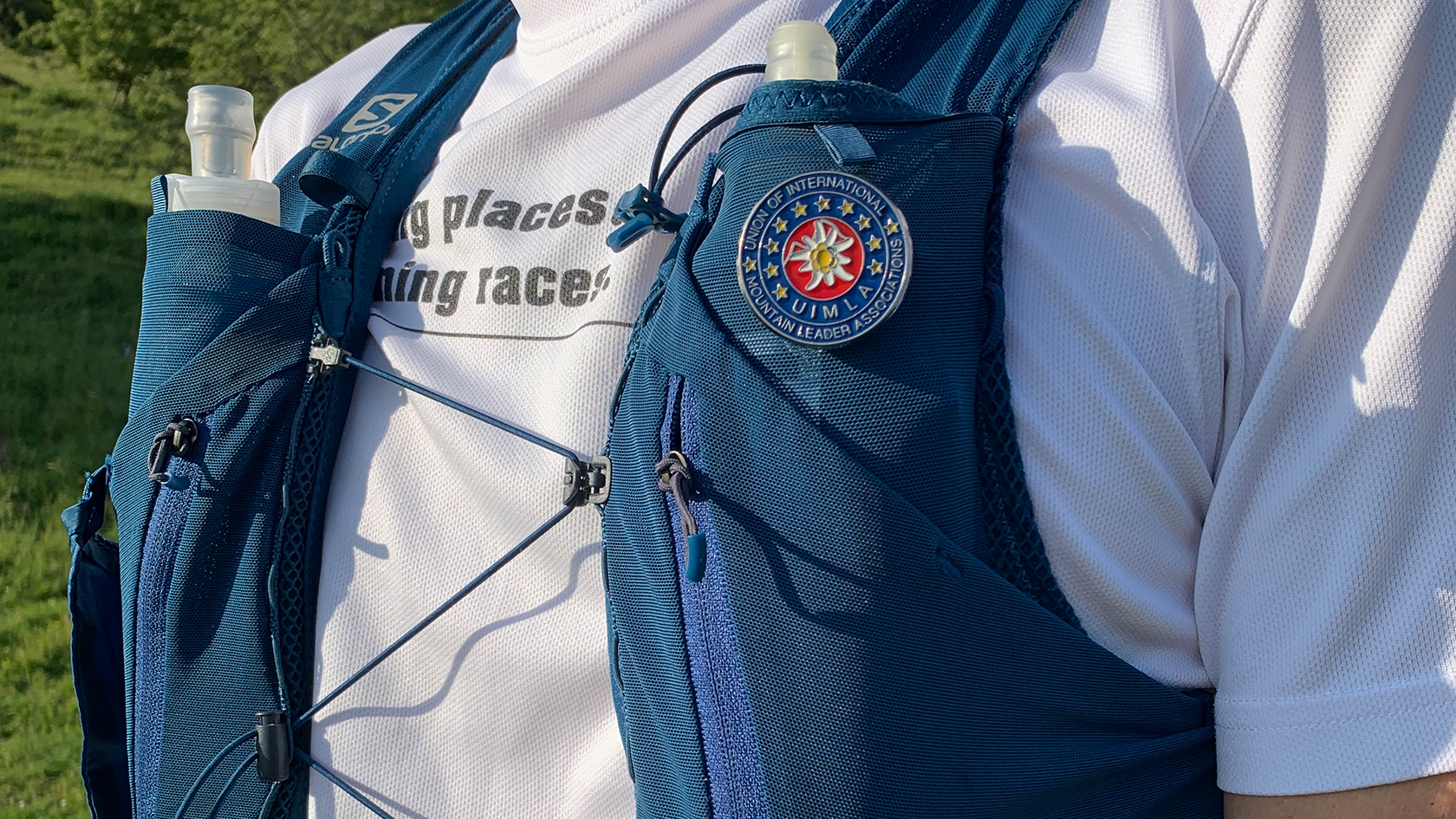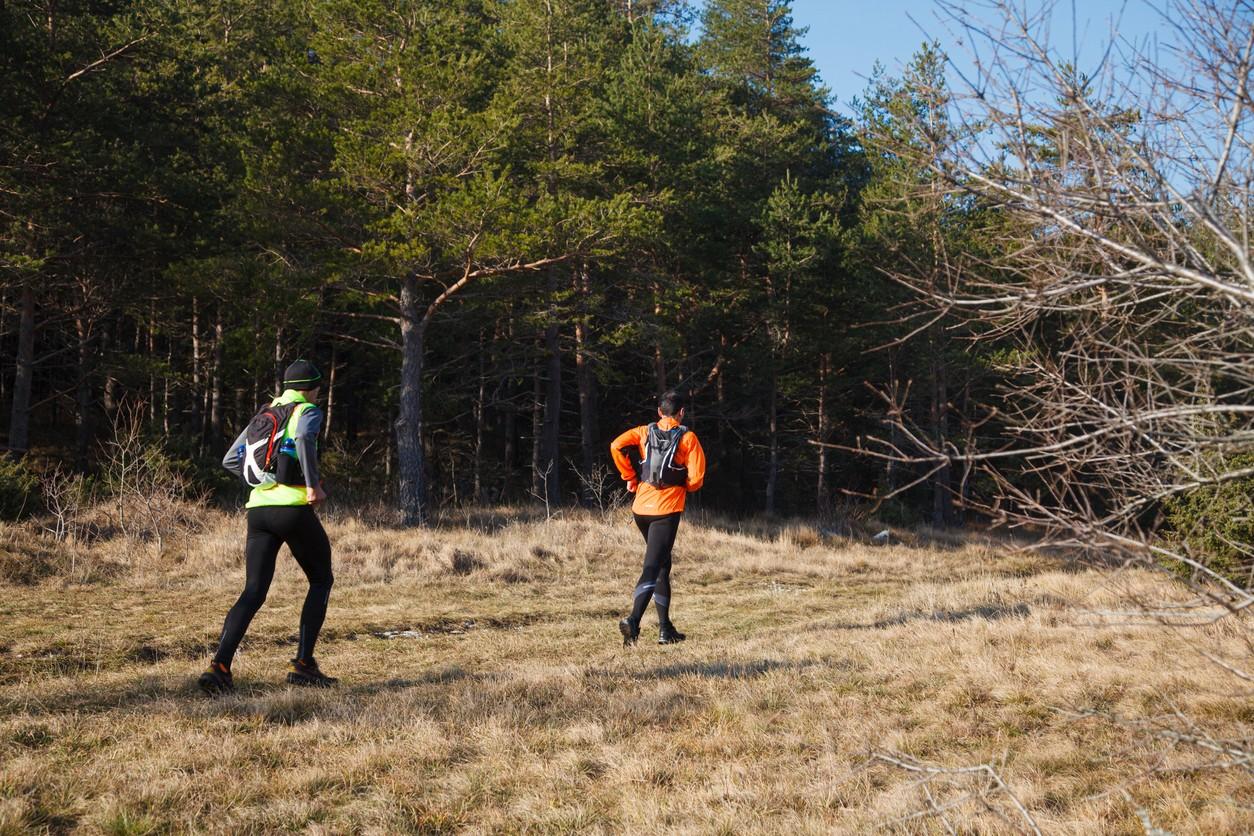Running Pack Buying Guide
A running pack is a lightweight, ergonomically designed bag or vest that allows runners to carry essentials—like water, nutrition, extra layers, and safety gear—while maintaining comfort and freedom of movement. Unlike traditional backpacks, running packs are built to minimise bounce, fit snugly against the body, and offer quick access to your gear on the move
Why Do Runners Need a Pack?
If you’ve ever tried to stuff your phone, keys, water bottle, and snacks into your shorts or jacket, you’ll know the struggle is real. A running pack solves that problem—and then some. For longer runs, especially on trails or in unpredictable weather, carrying essentials is non-negotiable. Hydration is the big one; even a 5K can feel like a slog if you’re parched, and for anything over an hour, water is a must. Nutrition is another key reason—energy gels, bars, and even a banana can be stashed in easy-to-reach pockets. Safety is crucial too: a phone, a small first aid kit, and an emergency blanket can make all the difference if things go sideways. And let’s not forget the unpredictable British weather—a lightweight waterproof or windproof jacket can be a lifesaver. For trail runners and ultramarathoners, a pack is essential for carrying mandatory kit, navigation tools, and extra layers. In short, a running pack gives you the freedom to go further, safer, and with total peace of mind.
How to Choose the Right Running Pack
Choosing the perfect running pack is a bit like finding the right pair of running shoes—it’s all about matching your needs, your body, and your ambitions. Start by thinking about the distances you’ll be running. For short, fast runs or races, a minimalist vest with just enough room for water and a phone might be perfect. If you’re heading out for hours on the trails, you’ll need something with more capacity for extra layers, food, and safety gear.
Hydration preferences matter too—do you like sipping from bottles, soft flasks, or a hydration bladder? Each has its pros and cons, and some packs are designed specifically for one system. Weather and terrain are also big factors: if you’re running in the hills or mountains, you may need space for a waterproof, gloves, and a hat. Fit is absolutely crucial—a pack should feel like a second skin, not a burden. Look for adjustable straps, different sizes, and gender-specific fits. Finally, set a realistic budget. While it’s tempting to go for the cheapest option, investing in a quality pack pays off in comfort, durability, and enjoyment over the long haul.
Running Pack Capacity: How Much Do You Really Need?
Capacity is one of the most common sticking points for new buyers. Too small, and you’ll be frustrated by the lack of space; too big, and you’ll end up lugging around unnecessary weight. For most runners, a pack in the 2–5 litre range is ideal for short training runs, races, or road running—just enough room for water, a phone, and a snack. If you’re venturing onto the trails or running for over an hour, a 5–12 litre pack gives you space for a jacket, extra nutrition, and a few safety essentials.
Heading into ultra territory or tackling mountain routes? Look for 12–20 litres, which can accommodate mandatory kit, extra layers, and even trekking poles. Fastpacking or multi-day adventures call for even more space—20 litres or more—so you can carry everything from a sleeping bag to a stove. Remember, bigger isn’t always better: a well-packed, snug-fitting smaller pack often feels lighter and more comfortable than a half-empty larger one. Think about your typical run, what you really need to carry, and choose accordingly
Vest vs Backpack: Which Style Suits You?
The vest vs backpack debate is a hot topic among runners, and for good reason. Running vests are the go-to choice for many, especially for racing and shorter efforts. Their close-to-body fit means minimal bounce, and the front pockets put water, nutrition, and your phone right where you need them. They’re light, breathable, and almost disappear once you’re moving. The downside? Storage is limited, so they’re not ideal for longer outings or when you need to carry bulkier kit.
Running backpacks, on the other hand, offer more space and versatility. They’re great for longer runs, mountain adventures, or events with mandatory kit lists. Many are designed to carry hydration bladders, extra layers, and even trekking poles. The trade-off is that they can feel heavier and may bounce if not properly adjusted. Ultimately, the choice comes down to your running style and needs. If you’re focused on speed and minimalism, go for a vest. If you’re all about adventure and self-sufficiency, a backpack is your best bet
Hydration Systems Explained
Hydration is at the heart of every great running pack. The three main systems—soft flasks, hydration bladders, and standard bottles—each have their champions. Soft flasks are a favourite for races and shorter runs. They fit snugly into front pockets, are easy to sip on the move, and shrink as you drink, reducing bounce. Hydration bladders, stored in the back compartment, are perfect for longer adventures where you need to carry more water. The hose lets you drink hands-free, but refilling can be fiddly mid-run.
Standard bottles are the old-school option, often stashed in side or rear pockets. They’re easy to fill and clean, but not as convenient to access on the move. Many runners mix and match—using soft flasks for quick access and a bladder for backup. Whatever you choose, make sure your pack is compatible, and practice refilling and drinking before race day. Staying hydrated is non-negotiable, especially when the miles add up or the sun’s beating down.
Compartments, Pockets & Storage Features
Organisation is key when you’re on the move, and the best running packs make it effortless. Front pockets are a game-changer, letting you grab gels, soft flasks, or your phone without breaking stride. Zipped pockets keep valuables like keys and ID secure, while stretchy mesh pouches are perfect for stashing gloves, a buff, or rubbish until you find a bin.
The main compartment is where you’ll keep larger items—think a lightweight jacket, spare top, or emergency kit. Some packs feature dedicated sleeves for hydration bladders, while others have clever pole holders for mountain runs. Compression straps help stabilise your load, reducing bounce and keeping everything close to your centre of gravity. Before you buy, think about what you typically carry and how you like to access it. The right combination of pockets and compartments can make a world of difference, especially when fatigue sets in and you need to grab something quickly.
Durability & Materials
Running packs take a beating, so durability is key. Look for packs made from high-stretch, abrasion-resistant fabrics that can withstand scrapes from branches, rocks, and the odd tumble. Many modern packs feature PFC-free DWR (durable water repellent) coatings, adding a layer of weather protection without harming the environment. Anti-odour treatments are a nice touch, especially if you’re prone to epic, sweat-soaked adventures.
Check the quality of zips, buckles, and stitching—these are the parts most likely to fail over time. A good running pack is an investment, and with a little care, it should last for years. Some brands offer repair services or replacement parts, so it’s worth checking their policies before you buy. Remember, a durable pack isn’t just about longevity—it’s about confidence. When you’re miles from civilisation, you want to trust your kit to hold up, no matter what the trail throws at you.
Women’s vs Men’s Running Packs
One size doesn’t fit all, and running backpacks are no exception. Many brands now offer women-specific packs, designed with shorter torso lengths, narrower shoulder straps, and a more contoured fit around the chest. These tweaks make a huge difference in comfort, especially over long distances. A pack that fits well won’t bounce, chafe, or restrict your movement, letting you focus on the run rather than your kit.
Men’s packs tend to have a slightly longer back panel and broader straps, but there’s plenty of overlap—some women prefer the fit of a men’s pack, and vice versa. The best advice is to try on several options and see what feels right for your body. Don’t be swayed by colour or branding; fit and comfort should always come first. If you’re between sizes, most packs offer enough adjustability to dial in the perfect fit.
What to Pack for a Run
What you carry depends on your route, the weather, and how far you’re going. For a short training run, you might only need a soft flask of water, your phone, and a house key. Longer outings call for more kit: energy gels or bars, a lightweight waterproof or windproof jacket, and perhaps a buff or hat for changing conditions. Trail runners should add a map or GPS device, a small first aid kit, and an emergency blanket—especially if you’re heading into remote or mountainous areas.
Don’t forget the little things: blister plasters, a spare pair of gloves, or a headtorch for early starts or late finishes. ID and a bank card are always a good idea, just in case. The beauty of a running pack is that it lets you tailor your kit to the day’s adventure—pack light for speed, or load up for a big day out. With everything organised and within reach, you can focus on what really matters: enjoying the run.
Top Running Pack Brands and Models
The running pack market is packed with great options, but a few brands consistently stand out. Salomon’s Advanced Skin and Active Skin series are favourites among trail and ultra runners, offering a snug fit, loads of accessible pockets, and gender-specific designs. Montane’s Gecko range is another top pick, with high-stretch fabrics, anti-odour technology, and a reputation for durability.
Ultimate Direction’s Ultra and Adventure Vests are lightweight, race-focused, and packed with clever features like pole storage and quick-access pockets. Each brand brings something unique to the table, so take the time to try a few and see what works for you
Don’t rush the process—finding the right running pack is worth a little extra time and effort. Visit a specialist running store if you can, and don’t be shy about loading up the pack with kit to see how it feels. Think about your future goals; if you plan to tackle longer distances or tougher terrain, it’s worth investing in a slightly larger pack now.
Check the mandatory kit lists for any races you’re eyeing up—some events require specific items, and you’ll need a pack that can carry them all. Personalise your pack with bungees, velcro tabs, or extra pockets if needed. And don’t underestimate the power of community—ask other runners for recommendations, read reviews, and join online forums or local clubs for real-world advice. The right pack can make every run more enjoyable, so take your time and choose wisely.
FAQs
For most runners, a 5–12 litre pack is the sweet spot—big enough for water, snacks, and a jacket, but not so large that it feels cumbersome. If you’re running ultras or tackling mountain routes, look for 12–20 litres to accommodate extra kit and safety gear. Only go bigger if you’re fastpacking or carrying overnight gear.
Vests are perfect for racing and shorter runs, thanks to their close fit and easy access to essentials. Backpacks are better for longer adventures or when you need to carry more kit. Try both and see which feels best for your running style.
A snug fit is key—adjust all the straps, distribute weight evenly, and make sure the pack hugs your body. Test the pack with your typical running kit before heading out.
Standard backpacks aren’t designed for running—they bounce, rub, and lack the quick-access pockets you need on the move. Running packs are purpose-built for comfort and stability.
Empty all pockets, remove the hydration bladder, and hand wash with mild soap. Rinse thoroughly and air dry before storing. Check the manufacturer’s care instructions for best results.
Look for adjustable fit, hydration compatibility, multiple accessible pockets, breathable materials, and weather resistance. Reflective details and emergency whistles are a bonus.
Related Articles

